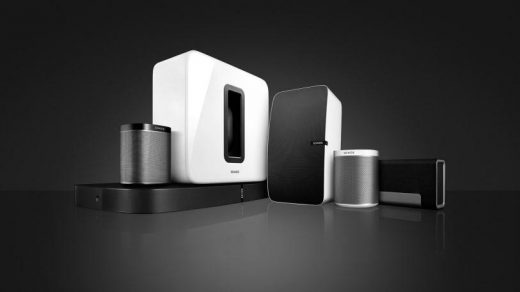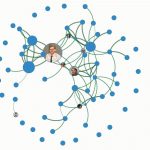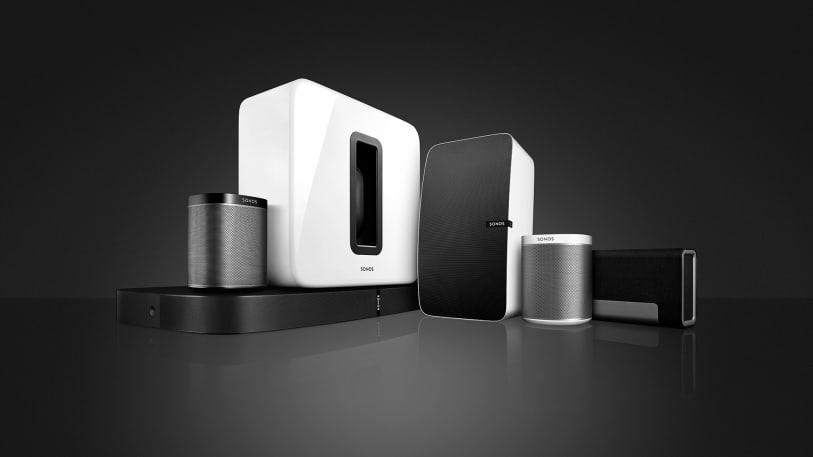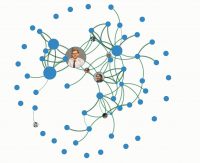How Sonos’s Design Chief Stays Creative And Inspired Despite The Noise
For an executive at a consumer tech company, Tad Toulis is surprisingly disinterested in gadgets. While he carries two phones and keeps a range of devices at home, the Sonos VP of design most relishes the opportunities to unplug–often literally–from our screen-saturated digital world.
I sat down with Toulis at the company’s Boston offices to learn about how he strikes enough of a balance between technology and real life to stay creative.
Tell me a bit about your creative life more generally. How did you wind up working in this field?
I went into the professional arts reluctantly. My mother and father both taught. My mother taught the social significance of dress, which is a particular anthropological study of how clothing has developed and why it developed. She also taught textile design. She recently passed, and now we’re going through her collection of things, which is amazing. The amount of technical information around fabrics, and finding fire retardant fabric swatches from 1962 that were being developed and sent to schools, saying, “Can you incorporate this material into your lectures to see if students can come up with ideas?” It’s a different industry, but it’s a technical industry.
So I grew up in an environment that was highly oxygenated by art and culture. I grew up in New York City. My biggest interest has always been art. At one point in my development [I decided] I didn’t think I wanted to be an artist, but I wanted to be in something creative.

I’m most impressed by art and culture. I’m personally past looking too much at design. There’s a lot of great design out there, but I think to come up with really authentic ideas, you need to not be always looking at what’s happening in the category. There’s a signal in the category that you need to look at, but to have a point of view that works and helps build a brand, you need to have ideas. The way I operate is, I spend a lot of time at museums and reading a lot of art and culture stuff.
Then there’s the team. I try to surround myself with people who are opinionated, who are willing to challenge me. The hard thing for a designer is, as you get more experienced and take on more responsibility, you don’t want to end up in an environment where people are agreeing with you because of your title. That’s not very satisfying if you’re creative. It’s about surrounding yourself with people who want to debate these things and geek out on it. Just like technologists will geek out on technology, designers will geek out on design. What does that design mean? Why does it work well?
We look a lot to Scandinavian design for inspiration. I look a lot at Donald Judd and that era of art. Super minimal. How little do you need to retain your interest? [Industrial designer] Dieter Rams was extremely impactful for Apple, but German design is very reduced and mechanical. We’re past the mechanical. Art and installation art and stuff from the ’70s really impresses me, because people were trying to get you to experience something by building this constructed environment. It’s that combination of things: art, installation art, and surrounding myself with people who are curious and willing to debate things.
What are your own tricks for balancing digital life with real life? How do you stay organized and sane?
I’ve worked in tech throughout my career. I started in San Francisco working with places like Hewlett-Packard as an agency guy. But I don’t particularly like technology. I like technology in the service of what it can do, but by default I’m not a fanboy of technology. It overwhelms me. It always has. When it works, it’s amazing, but there’s a lot of stuff that doesn’t work that well. Technology should not exist for technology’s sake.
For myself, it’s a real problem. I need reflection time. I need alone time. I spend a lot of time with people. A big part of my job is talking and communicating and connecting, routing and plumbing inside the organization with lots of different personality types. But I’m a big believer in retreat time. I started noticing about eight years ago that I don’t have a lot of retreat time. I’m having a hard time reading anything that’s longer than a few pages. The way we consume information became very atomized, and long-format thinking became harder.
I structure retreat time into my day. I structure my holidays in rural places with very little internet access, in foreign countries where it’s at least not my language so I can filter out. So I have my own survival techniques.
The other one is: I have two phones. One is work and one is personal. When it comes to the weekend, the work phone can easily stay in the car or the house so that when I’m at the coffee shop, I’m not getting sucked into drama. This technology makes everything drama. It must be responded to. I must give an answer.
I build a lot of float time in my day, because there’s going to be something to respond to. If everything is overscheduled, you leave the day feeling exhausted and you didn’t stay on target for what you’re trying to achieve. I have a short list of what I’m trying to achieve every week. It’s like three things. Because once it gets to nine things, that’s a to-do list. And you’re not going to do it. So I try to keep it really short and manageable.
It seems like over the course of the last decade, all of this technology infiltrated our lives, but it never came with instructions on how to manage or balance it. You see entire families staring into their phones in public all the time. There are no boundaries unless we build them ourselves.
I find it fascinating that we’re not training our kids in how to think about it. I look at my niece and nephew. My sister is a bright person, but it’s hard to raise kids with technology and not have them get into some bad patterns. In school, there’s no education about how to structure your thinking around it. There’s a lot of power in this stuff, and most people aren’t prepared to defend themselves against it.
Technology is ultimately neutral. People are not neutral. That becomes a very problematic intersection. We’re going to obliterate ourselves with technology. It’s just inevitable. It is the human condition to want to prove a point and move toward making that point. And then we think we’re going to take action to stem it or control it, and we often don’t. Because whatever comes out of that leads to the next thing.
I find it fascinating working at Sonos, because we’re using technology in a way that feeds a really great human interest. I don’t think the proposition is overly demanding, and that’s important. Whether you’re adjusting your mood or self-medicating with music, there’s something really powerful about it. The core [of the technology that we work with] is around something that feels really good for people. What you’re hearing in music is the human experience written in little three-minute chapters that everybody can relate to, and that’s a pretty great thing to work on from a tech background.
That it sounds really great allows people to wake up to the fact that “my current need isn’t being met as well it could be. I’m just using what I have.” That’s an interesting problem. Do you really need a laptop and an iPad? It’s easy to convince yourself yes. God knows I have one of each, and one Android tablet to compare the builds we make.
I have way too much technology in my house, primarily to use and test it, and that’s made it more compelling for me to be more controlled about it. Cast is great. Apple TV is great. Alexa is great.
But at some point, you’re jumping in between all these different things, and it’s more for the novelty of it. So I actually end up unplugging them and putting them back in the boxes until I need to use them for something. I just find it too distracting.
That’s not true of music. Music is always there, always valuable, and always meaningful.
Fast Company , Read Full Story
(23)














